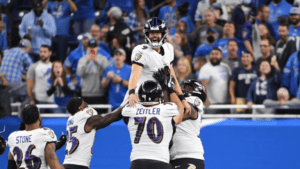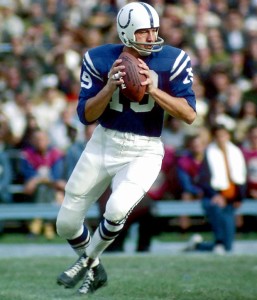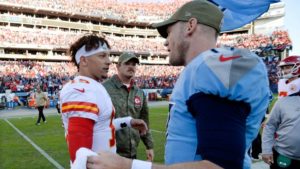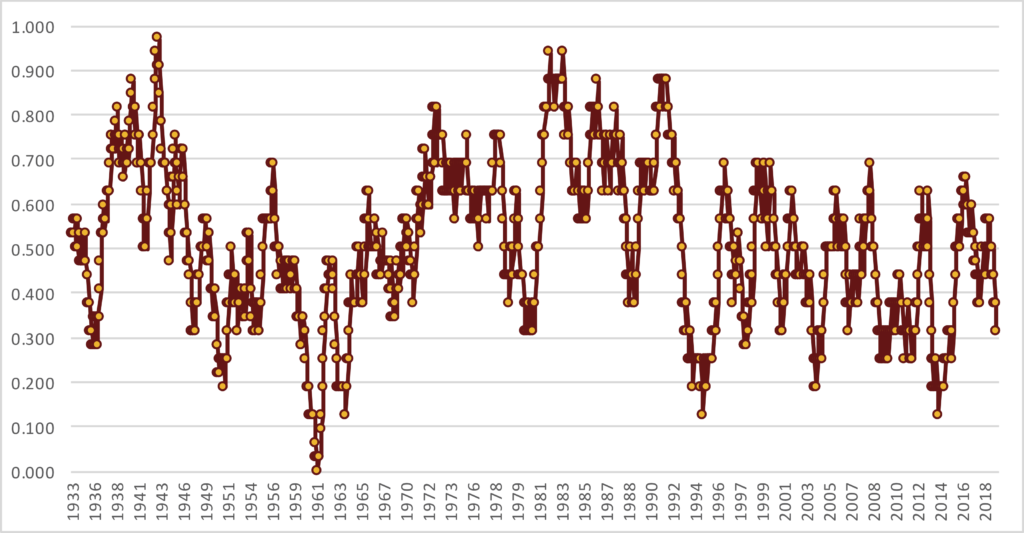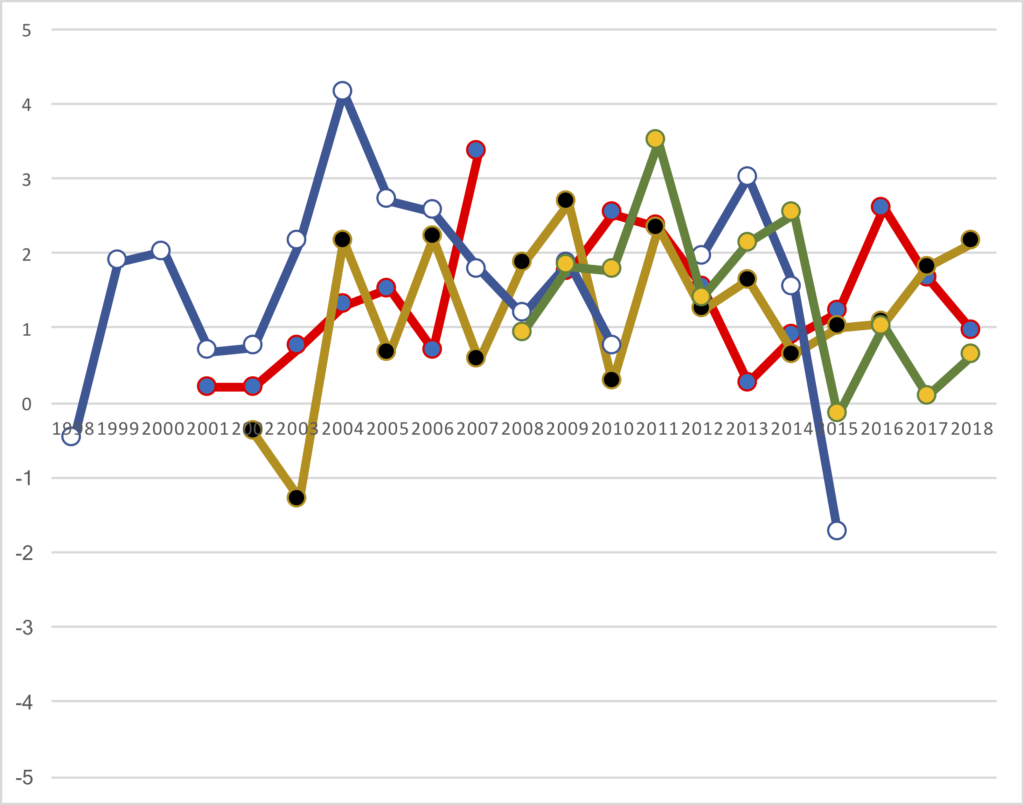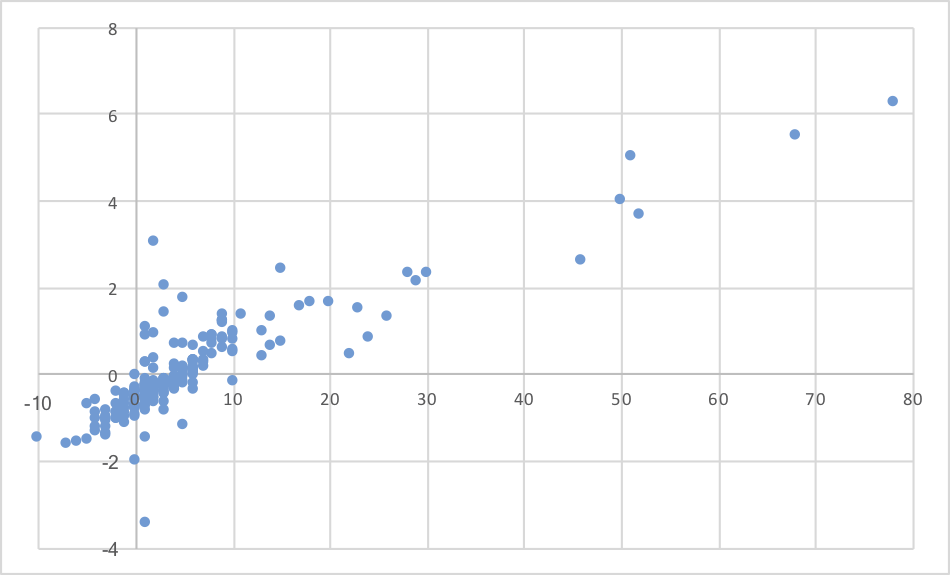
Aaron Rodgers and Tom Brady meet again: Can you feel the hype?
There are, of course, a lot of similarities between
Aaron Rodgers and
Mark Sanchez.
Both players were born in California, played college football in California, and were drafted by cold-weather teams.
Both players were first round picks to teams in green jerseys.
Both players have thrown exactly 89 career interceptions in the NFL.
And one season, at the start of a new decade, both Sanchez and Rodgers got trounced by a Tom Brady-led team. In 2010, in a game against the Patriots, Sanchez went 17 for 33 for 164 yards with 0 TDs, 3 interceptions, and 1 sack for 15 yards, producing an anemic 0.41 ANY/A as the Jets lost 45-3. In 2020, in a game in Tampa Bay, Rodgers went 16 for 35 for 160 yards with 0 TDs, 2 interceptions, and 4 sacks for 42 yards, a 0.72 ANY/A average; the Packers lost 38-10.
But Sanchez would get a chance to exact revenge in the postseason, and it was served ice cold: the Jets won, the largest regular season margin ever avenged in a game at the same site in the playoffs. This year’s Packers/Buccaneers game is a little different. For starters, the Jets actually had beaten New England earlier in the year, while Green Bay and Tampa Bay are no longer division rivals and only played once during the regular season. More importantly, while the 2010 Patriots were the better team and the home team, this time around, Brady’s team looks to be the worse team and is on the road.
So enough with the constant Sanchez/Rodgers comparisons. Let’s begin looking at situations similar to what will be playing out on Sunday in the NFC Championship Game: that is, times where a team met once (and only once) during the regular season, and then met again in the playoffs.
There have been three 40+ point wins in the regular season that saw rematches in the postseason: in all three, the regular season team won again. Those three games were, with the team that got blown out listed first, 1969 CLE @ MIN, 1991 DET @ WAS, and 2018 PHI @ NOR. You will notice that in all three games (along with many of the other, less than 40 point blowouts), the team that got blown out — for lack of a better words, let’s call them the Packers of history — were on the road in the rematch. And that’s part of what makes the Green Bay/Tampa Bay game less common.
The Packers will be 3.5 point favorites in the NFC Championship Game. So a better comparison might be the 2016 Chiefs and Steelers. In 2016, Kansas City was very good: they finished 12-4, but they were blown out, 43-14, on the road in Pittsburgh during the regular season. Pittsburgh went 11-5, and so the postseason game was in Kansas City. That sounds similar to the upcoming Green Bay/Tampa Bay game, with the rematch switching venues to the home of the better team. The Chiefs were 2.5 point favorites in that game, which they… well, lost, 18-16.
There have been 20 teams in the Super Bowl era that are facing something “similar” to what the Packers have this weekend. That means they:
- Lost by double digits in the lone regular season game against the playoff opponent
- The rematch was at the site of the “Packers” team
- The “Packers” were favored to win the postseason rematch
How did previous Packers teams fare? They went 14-6, meaning the Chiefs/Steelers game referenced above was an outlier. If you want an example that Packers fans will be happy about, let’s use a very topical pair of teams. In 1993, the Buffalo Bills hosted the Kansas City Chiefs for the AFC Championship Game. In the regular season, in a game on the road at Arrowhead, the Bills were easily handled by the Chiefs, 23-7. In the rematch, Buffalo — the “Packers” in this example — was favored by 3 points, despite going up against an old man considered the greatest quarterback of all time: Joe Montana. Buffalo did win the rematch easily, 30-13, and knocked Montana out of the game.
Here are all 20 games, with the “Packers” team — the one that got blown out in the regular season but hosted the rematch — listed first. Excluding four games that are red herrings, the home team went 11-5 in the rematch. Whether you think that’s good (hey, they got blown out the first time and won over 2/3s of their games) — or bad (they were favored to win and only won 11 out of 16 times) is up to you. It’s also worth pointing out that at least three of the times the home team exacted revenge involved some pretty miraculous circumstances, and this pretty easily could have been an 8-8 split.
Please leave your thoughts in the comments.

